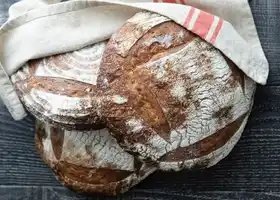Download Stashcook Now. Get the best meal planning app for your family.
Ingredients
400g strong white bread flour
100g wholemeal, rye or spelt flour
360ml tepid water
100g sourdough starter (see below)
10g salt
Method
1
2
3
4
5
6
7
8
9
10
11
12
13
14
15
Social
Email:
hello@stashcook.com© Copyright 2025 Stashbox Ltd. All rights reserved.
